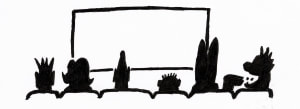Peter Haesendonck talks about making
A School for Misivavy
A School for Misivavy
How did the film happen? Being a social anthropologist, I've been making films all my life. I'm a visual anthropologist. Last year we had a request from an NGO (non-government organisation) in Madagascar to make some films of children and their parents. It was for a support scheme - like a sponsoring scheme. So that's quite easy for me to do. But I knew about BIAFF. I had already won a Diamond here (in 2021 for Iconoclasm made with Marcel de Jonghe) so I thought one of those film portraits should be more BIAFF minded. It should be a nice film and not really for sponsoring, but a nice portrait of a family. My wife who was working with me told me especially about this single mother, this lady, the mother of Misivavy. My wife was touched emotionally by her. So we asked the people responsible for the project if we could make a film of this woman who has absolutely nothing at home, not $1.00 a day and she agreed. We lived some days with her in her caban (hut). We discussed with her how we should make the film. She asked us to absolutely stress the fact that she is so happy that her children can go to school. So that is the way we began.
The first day we filmed around her house, but finally we didn't use that footage because it made the story too long. Then we filmed the children going to the school and the next day we filmed in the school. And then we filmed the Mamas who prepared the food.
If you go to Madagascar you will see that people are absolutely media minded, they do not make the slightest problem if you ask to film them. It's not like in Morocco or Mali or Senegal. In Madagascar people like to be filmed. That's the reason the Mama guided us and suggested we film the children while they are brushing their teeth. We realised that for her it was very important to show that the children are clean and neat and hygienic. We never think of this in Europe - how difficult it is for a Mama to raise all these children. But technically it was easy to film there
If you go to Madagascar you will see that people are absolutely media minded, they do not make the slightest problem if you ask to film them. It's not like in Morocco or Mali or Senegal. In Madagascar people like to be filmed. That's the reason the Mama guided us and suggested we film the children while they are brushing their teeth. We realised that for her it was very important to show that the children are clean and neat and hygienic. We never think of this in Europe - how difficult it is for a Mama to raise all these children. But technically it was easy to film there
Of course, being an anthropologist, I always want to give a copy of the film I've made to the person concerned. First of all, she spent at least one day on our film, so I paid her for that. Secondly, I promised to send her the finished film. But she has no Internet. She has nothing. Not even a Smartphone. So we contacted the school and the school organised a viewing. About 250 children came to see that small movie. And Misivavy was so out of her mind, seeing herself projected on the white wall. So we gave something back. Through one of the teachers as intermediary we know that Mama was OK with the film. It's important.
The voice speaking the commentary is Nancy Carfrae. She is Canadian, an actress in Belgium. Nancy has always dubbed my films in English. And she's a fantastic help for us in formulating English words and giving intonation. I believe she has got a very good voice. She asks us what accent do you want? Canadian? British? American? German English? On this film I asked for Canadian.
A feather for BIAFF
I'm so happy to be here physically at BIAFF, but on the other hand, shouldn't I have been here five years ago? I would have been a different person, because BIAFF encourages a lot of filmmakers. In my country we say we give a feather when something is done well. I give BIAFF a feather.
If there were no BIAFF I wouldn't have made these two films (A School for Misivavy and Iron Life – also a five star winner). I would have only made films for the NGO. I hope that the festival can continue even if we are getting old. The audience is getting smaller but we will keep fighting for it.
One more thing about BIAFF: I have noticed that there is not much diversity but there are a lot of women. And that's very important. Female gaze, male gaze.
If there were no BIAFF I wouldn't have made these two films (A School for Misivavy and Iron Life – also a five star winner). I would have only made films for the NGO. I hope that the festival can continue even if we are getting old. The audience is getting smaller but we will keep fighting for it.
One more thing about BIAFF: I have noticed that there is not much diversity but there are a lot of women. And that's very important. Female gaze, male gaze.
Peter Haesendonck, May 2023











